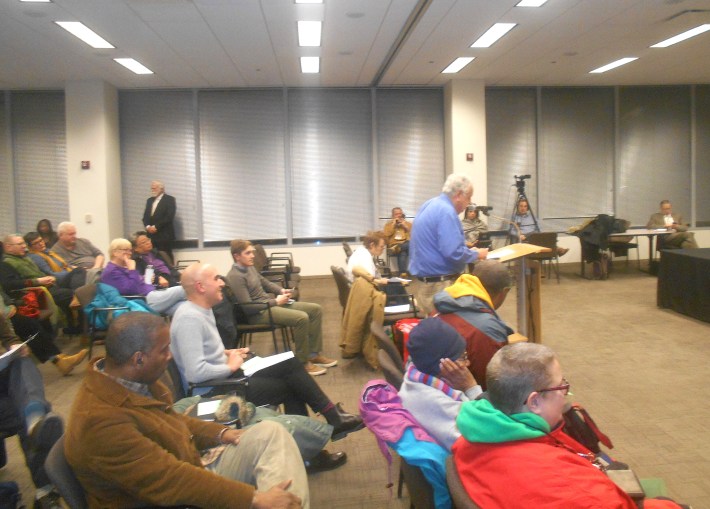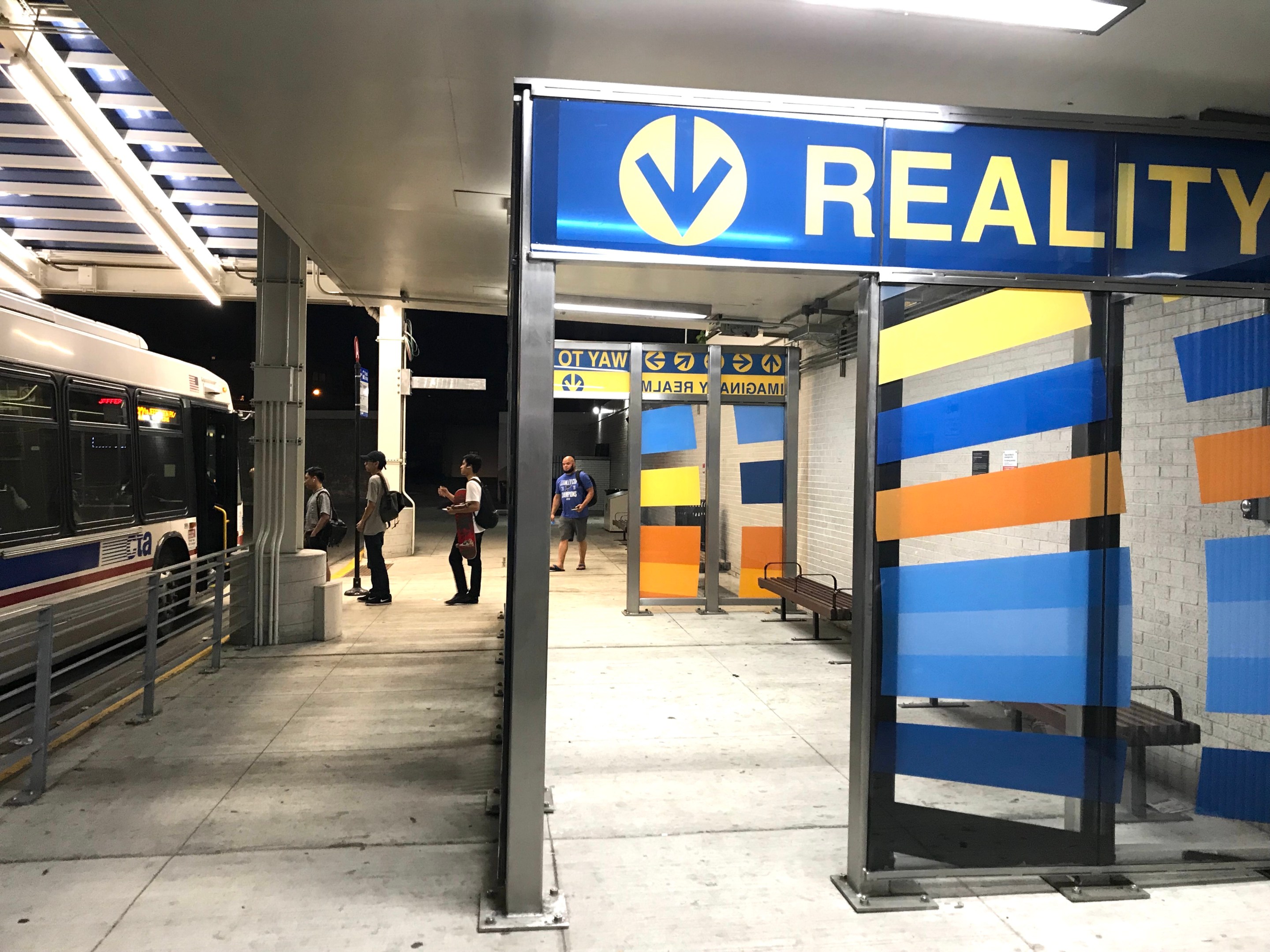While Metra and Pace public hearings tend to be relatively low-key affairs unless there are major service cuts or fare hikes planned, CTA budget hearings are seldom dull. And that was certainly the case at this week's hearing downtown at the CTA headquarters.
The CTA isn’t cutting service or raising fares this year. And it has several projects tin the works that will improve and expand service. But that doesn’t mean that riders didn’t have anything to complain about. ‘
One recurring theme throughout the hearing was that the CTA needs to have more night and off-peak service. Several speakers noted that many jobs, such at Chicagos two airports and UPS, aren’t 9-to-5, and argued that the limited service is hindering job opportunities for residents of some of our city’s most disadvantaged communities. A few speakers argued that the CTA can do more to address the needs of people with disabilities. And, of course, there were the perennial complaints about people smoking on the ‘L’ trains, general cleanliness of trains and buses, and the condition of certain stations.
By far, the biggest source of complaints was the shortage of transit options at night. While the Blue and Red lines run 24/7, the trains become much less frequent between 1:00 a.m. and 5:00 a.m. And while the CTA operates several “night owl” buses, they only run along some of the major corridors, and don’t necessary follow the same routing as their daytime counterparts, which has led to some survice gaps.
Quentin Berkley, of Austin, works a night-to-morning shift at O’Hare, and he regularly takes the Blue Line to work. He complained weekend construction along the line made him and his co-workers late for work on several occasions. And he urged the CTA to increase nighttime train frequencies along the line for workers like him
“I want a normal train system on the Blue Line, to get where we’re going, and get to work and other places,” Berkley said. “And I think it's time for us to get airport discounts for us airport employees, not only for O'Hare but [also] for Midway.” As it stands, extra $2.50 surcharge for passengers boarding at O'Hare (for a total fare of $5) is waived for airport workers.
Claudia Leavy, who lives on the Near West Side and takes the #9 Ashland Avenue bus to her job in West Town, complained about the fact that call center hours were reduced a few years ago, and that most bus routes don’t run in late evening and at night.
“We need to do what New York is doing, maybe being [a 24-hour transit system], being a 24-hour town, because some people have to work, like [Berkley] said,” Leavy testified. “I feel like there would be more employment if we were a 24-hour city. “
Leavy added that, in her experience, there's lax enforcement of the CTA smoking ban, and she suggested that more security guards on the ‘L’ trains would address the problem. “On trains, sometimes people smoke, and I don’t want to inhale all of that,” she said. “I know if someone smokes on the bus, the bus driver kicks them right off.”

Carlton Barnes, also of Austin, specifically took issue with the lack of overnight bus options, stating that, in the portion of the West Side west of Pulaski Road, there are no east-west overnight buses running between Madison Street and Belmont Avenue. He added that there should be overnight bus service on Cicero Avenue, since it would provide a convenient connection to Midway Airport and the Jefferson Park Transit Center. “That’s a priority, that’s where jobs are,” Barnes said. “The city that works isn’t working. I don’t understand that.”
It should be noted that Cicero Avenue is actually much closer to the Montrose Blue Line ‘L’ station, which is one stop east of Jeff Park. And, as I’ve written before, there is already Pace Route 392, which shuttles workers from Austin, North Lawndale and the west suburbs and UPS’ Hodgkins facility and makes one trip in the middle of the night.
Other speakers focused on the needs of the disabled riders. Speaking through one of the CTA’s sign language interpreters, Donna Shaw complained about what she described as the constantly changing and unreliable schedule of the #15 Jeffrey bus. “It’s very, very cold outside, and I’m standing there freezing,” she signed. “They need to write the name and number in the bus, and the number that I can call, so they can tell me before I leave home, because it’s a safety issue -- there are no lights out there.”
Another disabled rider, Ben Christy, complimented the CTA on several recent renovation projects, such as the rehab of the Jeff Park Transit Center. However, he complained that those renovations tend to involve taking out benches - which has been an issue for him personally and other riders he knows. “People can’t stand up all the time, it’s hard for them to say standing,” he said.
Christy said he suspects that benches were taken out so that homeless people wouldn’t be able to sleep on them, and suggested an alternative: more barstool-style benches that would be too small to sleep on, but which would offer enough surface area to sit down.
A few speakers touched on CTA’s environmental impact. Lucas Stephens, Senior Research Analyst at the Environmental Law & Policy Center, said that his employer supports the CTA’s plans to buy electric buses, noting that the transit agency plans to use them on the #66/Chicago Avenue route.
“We identified Chicago Avenue as a route with the fourth highest rate of particulate matter [in the city],” he said. “We suggest [also putting them on routes] #77 [Belmont] and #152 [Addison], where we have often found high rates of harmful particulate matter. Furthermore, we fully endorse Mayor Lightfoot’s campaign promise to fully electrify the CTA bus fleet by 2030.”
Long-time Lincoln Park activist Alan Mellis called for the CTA to improve transit service around the planned Lincoln Yards development by bringing back the canceled #41 Elston-Clybourn bus and having developer Sterling Bay pay the CTA to provide a 24-hour, free shuttle service between the corridor and the nearest ‘L’ stations. “The time to plan for serving the Lincoln Yards project is now,” he said.
And Mellis reiterated something that he’s been consistently pushing for over the past few years, asking that the CTA restore the portion of Route #11 that used to run along the section of Lincoln Avenue between Fullerton and Western avenues. The route was revived in 2017 as a pilot, but limited hours led to low ridership and it was canceled again the following year.
And there were some compliments, too. Melvin Thompson, executive director of Endeleo Institute, the community development arm of Trinity United Church of Christ, praised the renovated 95th-Dan Ryan station. He noted that his organization actively supported the project as well as the long-planned Red Line extension to Altgeld Gardens. And, noting that the lots CTA has been using to stage construction equipment will soon be freed up, Thompson said that he would like to see them used for transit-orientated development. “We don't want to see parking lots, because we don’t want to be an auto-dependent community,” he said.






